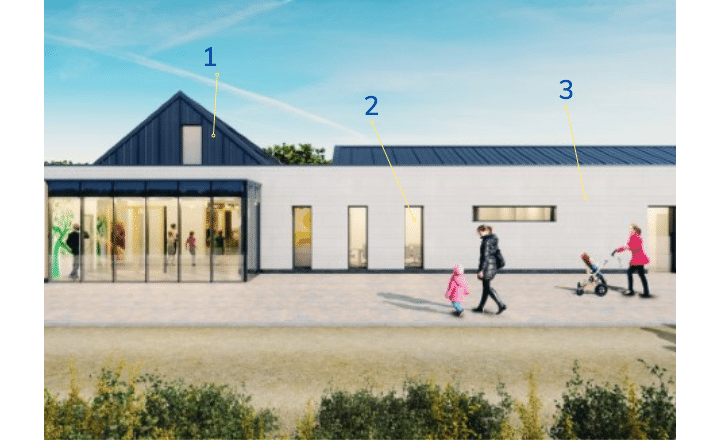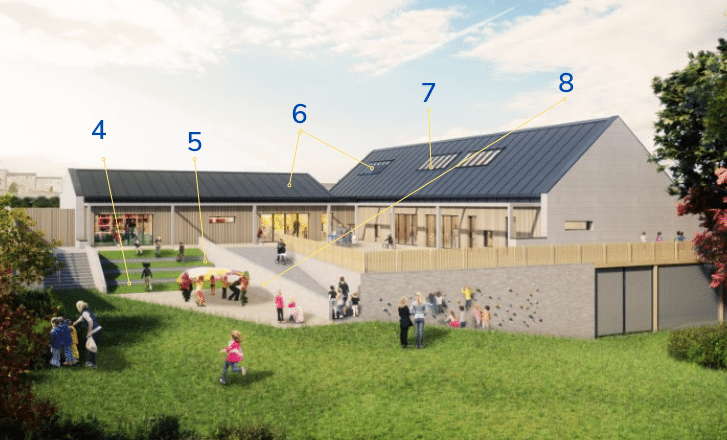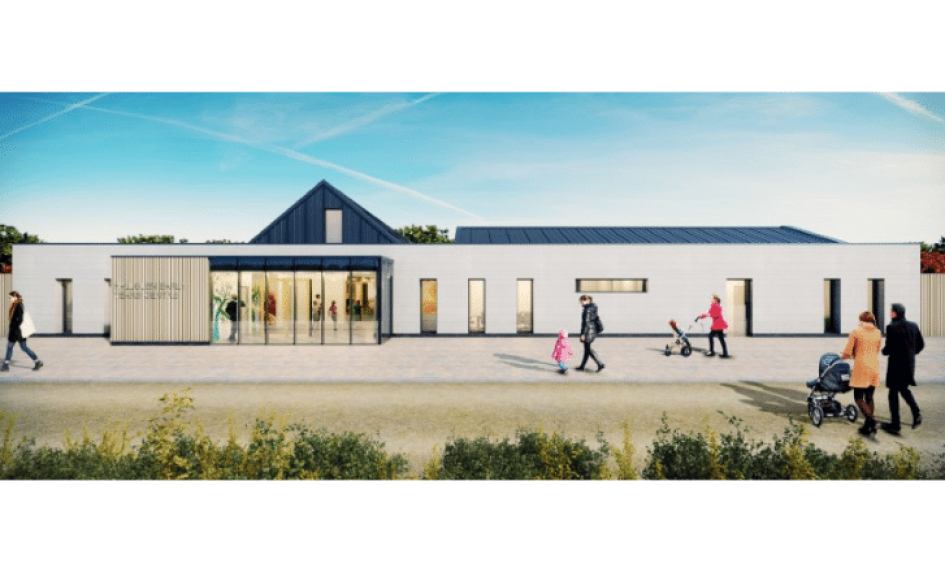Built on the site of an existing primary school, the Glenburn Early Learning and Childcare Centre is located in Hallglen, Falkirk and opened in February 2020. At its conception, the centre carried the name Hallglen to fit in with the nearby school and the area, but this was later changed.
The centre serves a residential area and, at capacity, will provide places for 20 two-year-olds and about 70 three-to-five year olds. Currently 27 staff work at the centre.
The buildings were designed to offer a wide range of learning experiences and opportunities, allowing children to be active, as well as enjoying quiet time to rest and read. The architects, ADP Architecture (adp-architecture.com), aimed to create strong visual connections between the play spaces so that children could see their siblings and friends in different buildings, and to give an atmosphere of familiarity.
The open spaces inside give a feeling of independence, enabling children to move around freely to do activities.
The site is surrounded on two sides by trees and has beautiful views of rolling hills and green fields.
Key features

1. The mezzanine floor in the pitched roof gives children a quiet place to sit, including a reading nook and rest space
2. Large windows and floor-to-ceiling doors in parts of the centre, allow in natural light and heat and help to keep down energy costs
3. Inside, the open plan nature of the accommodation allows children to move freely, and staff can vary the space according to tasks and activities

4. Access to the centre and play areas consists of steps and ramps, catering for all physical needs. These also add an interesting visual aspect to the layout
5. A soft surface area is used as part of children’s own play, and for activities supervised by staff
6. The height of the pitched roofs indicates hierarchy. Two-year-olds are housed in the building with the lower roof, while three-five years olds are in the one with the taller roof
7. Skylights provide additional heat and natural light to the inside of the building and are a feature of the roof design
8. The L-shape of the buildings provides an enclosed play area, allowing children of all ages to meet and see each other. Different surfaces and textures stimulate play
“The mezzanine floor is a favourite”: Head of Centre Julia Marshall reflects on Glenburn’s design
What’s so great about the outdoor spaces?
We have quite a lot of space outside which gives us a great deal of flexibility. The L-shape of the buildings makes it feel safe and enclosed and allows the children to meet when everyone goes outside. We have created allotments at the bottom of the garden and we are currently looking at different ideas for how else we make good use of the space. We have a fire pit, where we can cook food, and the staff have been trained to use it so that they, in turn, can teach the children how to be safe around fire.
What is the best thing about the indoor areas?
The open plan rooms give us the flexibility to change the layout depending on our needs, and the children’s activities and interests. There are interactive walls and we also have a sandpit indoors. The mezzanine floor under the pitched roof is a real favourite, as it’s enabled us to create cosy spaces for children who might need this during the day, as well as a quiet area for readers.
Would you change anything about it?
We have very little outdoor storage to protect larger equipment from the elements, so if we were planning the design of the centre and play areas again, I’d include some space for this purpose.










